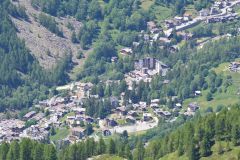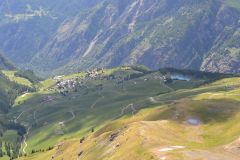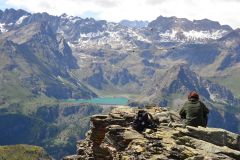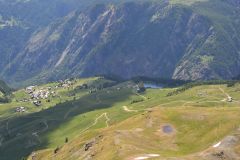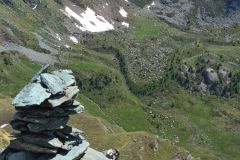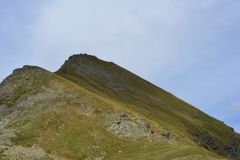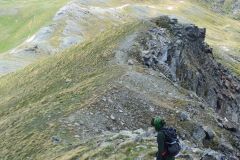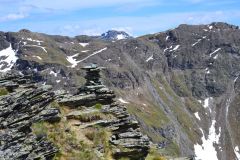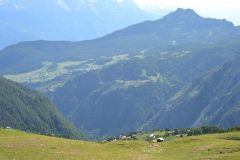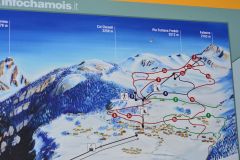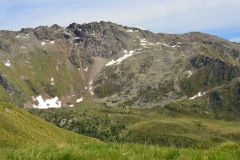The Aosta Valley is a mountainous region located in the northwestern part of Italy. It is the smallest, least populous, and least densely populated region of the country. Despite its small size, the region is known for its picturesque landscapes, rich history, and cultural heritage.
One of the main attractions of the Aosta Valley is its natural beauty. The region is home to the Italian Alps, which offer some of the most spectacular mountain scenery in Europe. Visitors can enjoy skiing and snowboarding in the winter, and hiking and climbing in the summer. The Gran Paradiso National Park, located in the heart of the Aosta Valley, is a particularly popular destination for outdoor enthusiasts. The park is home to a diverse range of flora and fauna, including the ibex, chamois, and marmot, as well as a variety of bird species.
The Aosta Valley is also home to a number of historic sites and monuments. The Roman Theater in Aosta, the ancient city of Octodurus, and the ruins of the medieval castle of Saint-Pierre are just a few examples of the region’s rich history. The region is also home to a number of medieval villages, such as Gressoney-Saint-Jean and La Salle, which offer a glimpse into the region’s past.
The Aosta Valley is also known for its delicious cuisine. The region’s cuisine is characterized by its use of local ingredients, such as game, polenta, and cheese. The region is particularly famous for its Fontina cheese, which is made from the milk of the local Valdostana cows. Visitors can also sample local wines, such as the famous Blanc de Morgex et de La Salle, which is made from the local Prié Blanc grape variety.
The Aosta Valley is a beautiful and culturally rich region in the northwest of Italy that offers visitors a variety of natural and historical attractions. From the Italian Alps, to the Gran Paradiso National Park, to the Roman Theater in Aosta, and much more, it’s a destination that should be on your list if you’re looking for an unforgettable experience.
History
The Aosta Valley, located in the northwestern part of Italy, has a rich and diverse history that spans thousands of years. The region has been inhabited since prehistoric times, and has been shaped by the influence of various cultures and civilizations over the centuries.
In ancient times, the Aosta Valley was settled by the Celts, who were later conquered by the Romans in 25 BC. The Romans established a number of settlements in the region, including the city of Aosta, which was known as Augusta Praetoria. The Romans also built a number of roads and infrastructure in the region, including the famous Aosta-Turin road, which was used to connect the two cities. The Romans also left behind a number of historic sites and monuments, including the Roman Theater in Aosta and the ancient city of Octodurus.
After the fall of the Roman Empire, the Aosta Valley was ruled by a succession of different powers, including the Lombards, the Franks, and the Holy Roman Empire. In the Middle Ages, the region was fought over by the powerful feudal lords of the neighboring regions, and a number of castles and fortresses were built to protect the territory. One of the most famous of these is the medieval castle of Saint-Pierre, which still stands today.
During the Renaissance, the Aosta Valley experienced a period of cultural and economic growth, as many wealthy merchants and nobles built grand palaces and villas in the region. The region also became an important center of trade, with the city of Aosta becoming a major hub for the trade of wool and other goods.
In the 19th century, the Aosta Valley became a popular destination for tourists, as the region’s picturesque landscapes and mild climate attracted visitors from all over Europe. The region also became an important center for skiing and winter sports, with many ski resorts being established in the area.
Today, the Aosta Valley is an autonomous region of Italy, with its own government and parliament. The region is known for its natural beauty, rich history and cultural heritage, and delicious cuisine, and attracts thousands of visitors each year.
The Aosta Valley has a rich history that has been shaped by the influence of various cultures and civilizations over the centuries. From the Roman Empire to the Middle Ages, to the Renaissance and the modern era, the region has seen a variety of changes and developments that have left behind a rich cultural heritage. Despite the changes, the region has managed to preserve its unique identity and continues to attract visitors from around the world.
Geology
The Aosta Valley, located in the northwestern part of Italy, is known for its stunning natural landscapes and rugged terrain. The region’s geology plays a major role in shaping these landscapes, and is of great interest to geologists and earth scientists.
The Aosta Valley is situated in the Western Alps, which are part of the larger Alpine mountain range. The region’s geology is primarily composed of crystalline rocks, such as granite, gneiss, and migmatite, which were formed during the Paleozoic Era (about 540 to 251 million years ago). These rocks are the foundation of the region’s mountains, and are responsible for their steep, rugged terrain.
The region is also characterized by a number of glacial valleys, which were formed during the Pleistocene Epoch (about 2.6 million to 11,700 years ago). These valleys were formed by the erosion caused by glaciers, which carved out deep channels and created the U-shaped valleys that are a characteristic feature of the region. The Gran Paradiso National Park, located in the heart of the Aosta Valley, is an excellent example of a glacial valley, with its steep walls and flat floor.
The Aosta Valley is also home to a number of active and inactive geothermal systems, which are the result of the region’s tectonic activity. These systems are characterized by hot springs, geysers, and fumaroles, which are caused by the heating of groundwater by magma and hot rocks beneath the Earth’s surface. The Fonte di San Giovanni in Saint-Vincent is an example of an active geothermal system, which is a popular tourist attraction.
Finally, the Aosta Valley is also home to a number of rock formations, such as rock towers, arches, and natural bridges, which were formed by erosion and weathering of the region’s rocks. These formations are a popular destination for rock climbers and hikers.
The Aosta Valley’s geology is an interesting blend of ancient rocks, glacial valleys, geothermal systems, and rock formations. The combination of these geologic features is responsible for the region’s stunning landscapes, and makes it an ideal destination for geologists, hikers, and outdoor enthusiasts. The region’s geology is a unique and fascinating aspect of the Aosta Valley, and contributes to the region’s diverse and unique natural beauty.


